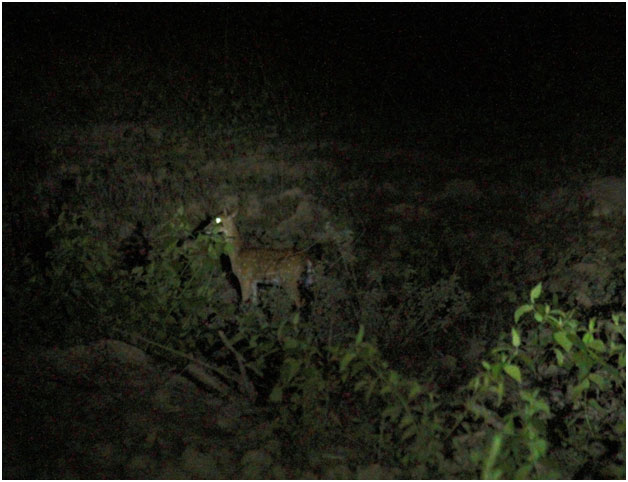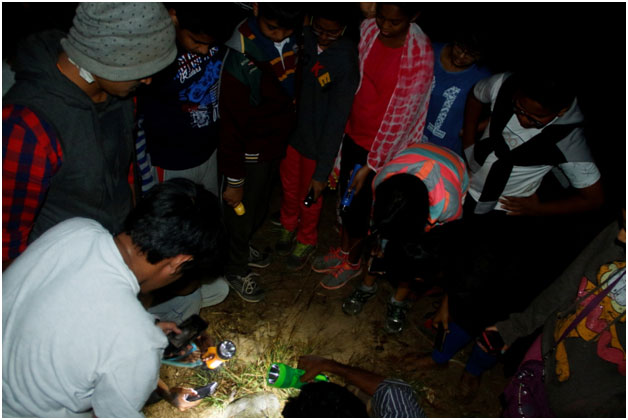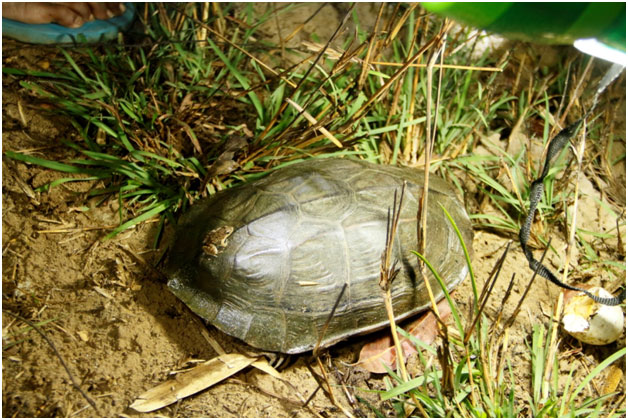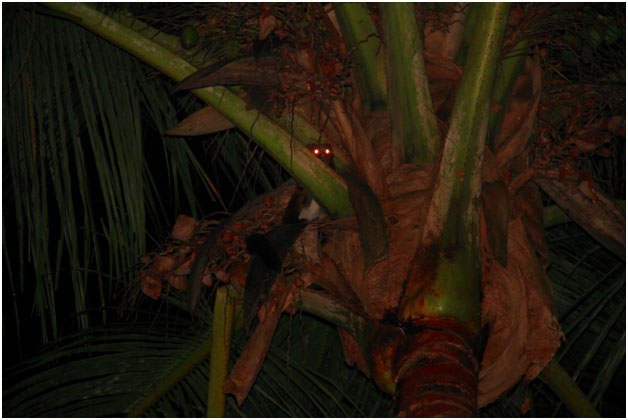Nocturnal Wildlife Of Bandipur And Mudumalai
Bandipur National Park and Mudumalai National Park, both located in the southern Indian states of Karnataka and Tamil Nadu, respectively, are renowned for their diverse and rich nocturnal wildlife. Some of the prominent nocturnal animals you might encounter in these national parks include:

- Indian Leopard (Panthera pardus fusca): The elusive and majestic Indian leopard is a top predator in these forests and is most active during the night, making it a prized sighting for wildlife enthusiasts.
- Bengal Tiger (Panthera tigris tigris): Though more commonly seen during the early morning and late evening, tigers are known to be active at night as well. The parks have healthy tiger populations, and lucky visitors may spot these elusive big cats during their nocturnal wanderings.
- Indian Civet (Viverra zibetha): The Indian civet is a nocturnal mammal with a cat-like appearance. It is known for its strong-smelling musk and is primarily carnivorous.
- Indian Giant Flying Squirrel (Petaurista philippensis): As the name suggests, this large flying squirrel is primarily nocturnal and uses its specialized membrane to glide from tree to tree in search of food.
- Indian Pangolin (Manis crassicaudata): The pangolin is a shy and nocturnal creature, covered in protective scales. Unfortunately, it is also one of the most trafficked and endangered animals in the world.
- Indian Porcupine (Hystrix indica): These nocturnal rodents are covered in sharp quills and can be seen foraging for food during the night.
- Slender Loris (Loris lydekkerianus): A small, big-eyed primate that is entirely nocturnal, with a diet consisting of insects and fruits.
- Indian Nightjar (Caprimulgus asiaticus): A nocturnal bird known for its camouflaged plumage and distinctive churring calls heard during the night.
- Indian Scops Owl (Otus bakkamoena): Another owl species, active at night and known for its characteristic hooting calls.
- Indian Hare (Lepus nigricollis): These small mammals are often seen darting around during the night, feeding on grass and vegetation.
- Indian Wolf (Canis lupus pallipes): The Indian wolf is a highly social animal and may hunt in packs during the night.
- Indian Giant Squirrel (Ratufa indica): This large squirrel species is active during the day but may also be seen at dawn and dusk, preparing for the night.

These parks offer incredible opportunities to observe and appreciate the wonders of India’s nocturnal wildlife. However, keep in mind that nocturnal animal sightings can be more challenging than diurnal ones, as animals may be more elusive and sensitive to disturbances during their active hours. It is essential to follow park rules, maintain silence, and be patient for the best chances of spotting these nocturnal creatures. Additionally, it’s a good idea to join guided night safaris led by experienced naturalists to enhance your chances of successful sightings while minimizing any negative impacts on the wildlife.
Tracking nocturnal wildlife in India can be a rewarding and exciting experience. Here are some steps and tips to help you get started:
- Research and Knowledge:
- Begin by researching the specific nocturnal wildlife species you are interested in tracking. Learn about their habits, behavior, and preferred habitats.
- Invest time in studying their tracks, scat, and other signs they leave behind. Familiarize yourself with the differences between various animal tracks to identify them accurately.
- Choose the Right Location:
- Select a suitable location known for its nocturnal wildlife population. National parks, wildlife sanctuaries, and forested areas often provide good opportunities for nocturnal wildlife encounters.
- Plan Your Trip:
- Make sure to plan your trip during the right season when nocturnal activity is at its peak for the species you wish to track.
- Check if the area requires permits or has specific regulations for nocturnal activities, and ensure you abide by them.
- Use the Right Gear:
- Bring essential gear such as a flashlight or headlamp (preferably with a red filter to avoid startling wildlife), comfortable and weather-appropriate clothing, sturdy footwear, and insect repellent.
- Consider bringing a camera with a low-light or night-vision feature to capture sightings without disturbing the animals.
- Be Patient and Quiet:
- Nocturnal wildlife is more active during the night, so patience is key. Find a comfortable spot and remain still and quiet to increase your chances of observing animals in their natural habitat.
- Listen Carefully:
- Pay attention to the sounds of the night; animal calls, rustling leaves, and other noises might help you locate and identify nocturnal creatures.
- Avoid Disturbing Wildlife:
- Respect the animals and their habitats. Keep a safe distance and avoid getting too close to avoid causing stress or disturbance to the wildlife.
- Engage Local Guides:
- If you are unfamiliar with the area or the nocturnal wildlife, consider hiring a local guide or joining a wildlife tour. Local guides often have valuable knowledge and can enhance your experience.
- Maintain Safety:
- Remember that tracking wildlife at night can have its risks, especially in areas with potentially dangerous species like wild cats or snakes. Always prioritize your safety and be aware of your surroundings.
- Leave No Trace:
- Always follow the principles of Leave No Trace. Carry out all your trash and avoid leaving any impact on the environment.
Tracking nocturnal wildlife requires dedication, patience, and a genuine appreciation for the natural world. With time and practice, you will develop a better understanding of India’s nocturnal animals and their behaviors. Enjoy the adventure and the wonders of the night!

List of nocturnal Animal sounds you are likely to here at Deepjungle Resort Mudumalai . Here they are:
- Cicada: High-pitched and continuous buzzing sound, often heard during warm summer nights.
- Frog: Various species of frogs produce different sounds, such as croaking, chirping, and ribbiting.
- Elephant Trumpet: Loud and trumpeting vocalization made by elephants, often used for communication among the herd.
- Deer Alarm Call: A high-pitched and snorting sound made by deer when they sense danger or feel threatened.
- Crickets: Chirping sounds produced by male crickets to attract females or establish territory.
- Owl Hooting: Haunting and distinctive hooting sounds made by owls, used for territorial communication and mating.
- Civet: Various vocalizations, including growls and snarls, used for communication among civets.
- Deer Rutting Call: During the breeding season, male deer (bucks) produce loud and resonating roars to attract mates and establish dominance.
- Night Jar: Whistling or churring sounds made by nightjars during their nocturnal flights.
- Slender Loris: High-pitched and soft vocalizations, including whistles and clicks, used for communication.
- Wild Dog: Also known as the African wild dog or painted dog, they produce various vocalizations such as chirps, whines, and howls for communication within the pack.
- River Flow: The soothing sound of water flowing in a river or stream, often heard in nocturnal environments.

Listening to these sounds can be a fascinating way to connect with the nighttime wildlife and appreciate the wonders of nature. Keep in mind that the sounds of these animals might vary depending on their species and habitat.



